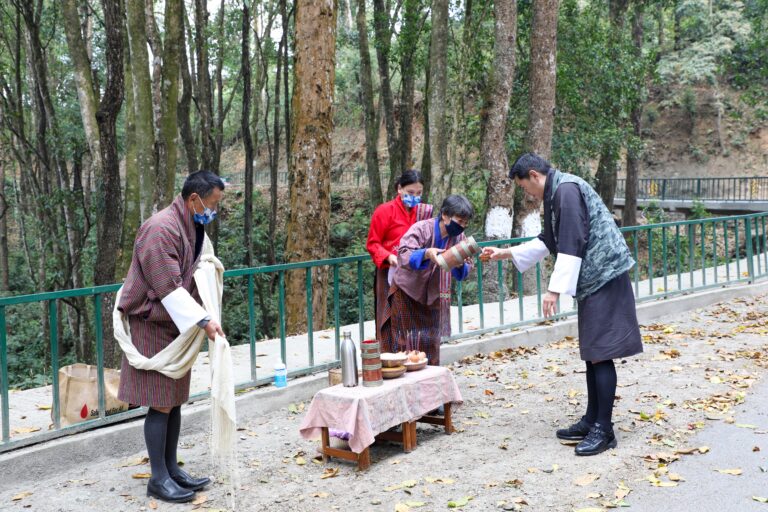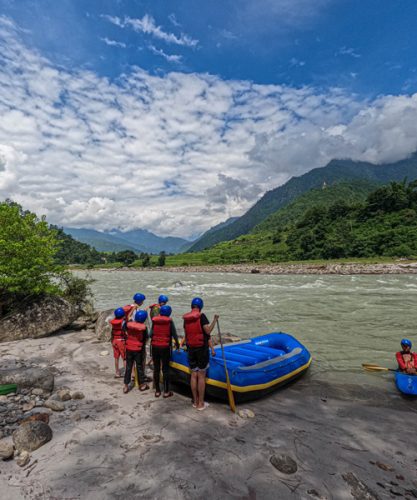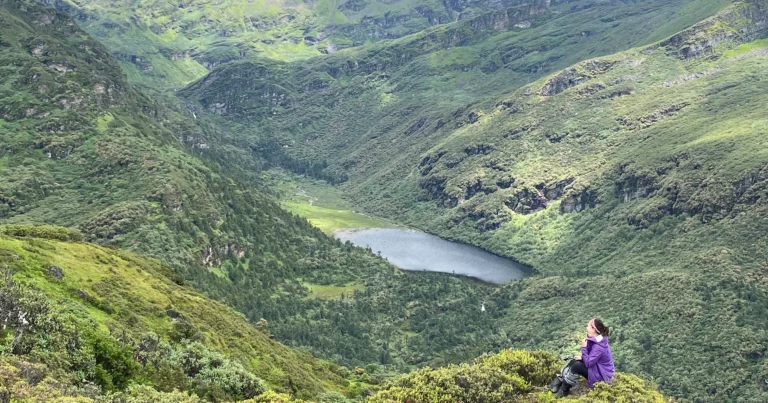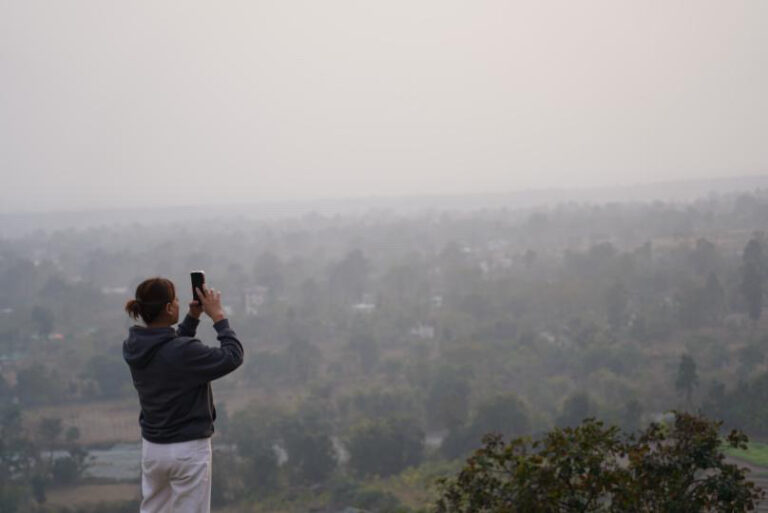Nubtsonapata Trek
In July, despite the onset of the monsoon, I decided to start my sojourn towards the mountains. Before my trek, I contacted Kencho Dorji, the same guide who accompanied me for the Meri Phunsum hike, exactly one year before. This time around, we decided to trek together and explore Nubtsonapata, popularly known as the ‘ ‘The Great Lake of the West ” in Haa. On the trek day, we were fortunate enough to meet up with a porter who was going up to the pastureland (where the lake is). We instantly befriended and bonded with them. The porter appeared rather pleased or probably even more gratified that he would at least have company for the grueling arduous trek he invariably makes on his own carrying essential commodities for the nomads to the mountains.
There are several trekking routes to Nubtsonapata. We took the trail commonly used by the local herders that start from Bjanadingkha. Bjanadingkha Lhakhang is located on top of the western hill of Haa Valley. It is approximately 6-7 kilometers away from Haa town and the nearest road head point for the trek to Nubtsonapata.
During the monsoons, the farm road is accessible only by four-wheel drive. In the morning, I took a Bolero ride to the endpoint of the road where my guide and porter were waiting. From the endpoint of the road, we started to hike up, crossing some of the alpine regions covered in dense forests. After hiking for 30 minutes, we reached the first resting point in Talikha, where we stopped for tea and snacks.
This is the trek junction where the mule track forks off to Nubtsonapata and Meri Phunsum. After tea, we proceeded with our hike, crossing some of the most gorgeous and lush green alpine forest areas of western Haa. Although the Tourism Council of Bhutan identified Nubtsonapata Trek in 2012, unlike the Meri Phunsum hiking trail, which offers several resting areas and canopy infrastructures, there are no such facilities en route to Nubtsonapata except for a guesthouse in the vicinity. En route to Nubtsonapata, we met a man with a fully laden horse with a few local pilgrims. After 6 hours of hiking, we arrived at ‘Tshotshokha,’ where my yak herder friend, Kencho, was waiting for us. Kencho greeted us with hot milk tea, and after getting a fire going, he cooked a hot meal for us before calling it a night.
The next day, Kencho accompanied us to Nubtsonapata. I knew Kencho wouldn’t lose the way, but I retrieved my Relive App on the trail to re-affirm myself. From Tshotshokha (first base) to Nubtsonapata, we had to cover at least 13 kilometres in 6 hours. The second highest point of the trek is Regina, located at an elevation of 4300 meters above sea level. At about this time of the year and this altitude, we came across trees adorned with tiny pink and purple flowers. We took a long rest there for tea and snacks. The viewpoint offers a panoramic view of some of the most spectacular mountains of Haa.
As we were about to proceed, a porter and a nomad with a fully laden horse were returning from Haa town with their essential commodities. They joined us. I volunteered to be the horsewoman for the lovely endearing horse (almost like a horse found in fairy tales) for nearly an hour until I was distracted by a white poppy flower growing on one side of the lake stream.
The weather started to worsen, so we hurried along; we could not keep up pace with the horseman because he walked way too fast for us. Perhaps partially attributed to the fact that he was more familiar with the trekking trail, which he uses regularly and probably much fitter than us!
When I asked the nomads about the mountain trail, they told me (to my utter surprise) that they could easily do the trek from Haa to Nubtsonapata in a day or so. In fact, in the olden times, the nomads would take only a day to visit the lake and return to Haa Valley!
By the time we reached the highest peak at an elevation of 4400, the weather had got even worse. The continuous rainfall quickly drenched us to the skin, but despite the treacherous paths strewn with stones, mud puddles, and slush, like old stoics, we plodded and struggled on.
Personally, at one point in the trek, I could not help thinking that even an Everest expedition couldn’t get tougher than this!
Wet, tired, and hungry, we arrived at the nomad’s camp. By then, we were as wet as drenched rats and as hungry as wolves. Only two herders were living in the vicinity of the lake.
We carefully selected the yak herder’s hut at a higher elevation than the lake, should by any quirk of fate, the natural moraine of the lake happen to burst! My friend Kencho, being a friend of the new host, also helped.
Our new host, although quite introverted and extremely shy, happened to be a perfect host. He cooked dinner and made beds for us. As a solo woman traveller, sharing a small cramped hut with four men is not uncommon. Being the only woman around, I felt pampered with their care and affection.
When the weather got a little better, the following day, we headed to the lake right after breakfast. With local experts and knowledge, we took the shortest route. Initially, it was a little cloudy, but once we reached the area, the clouds cleared up for a few minutes, offering us a majestic view of the endless emerald lake. We burned incense sticks and meditated for a while before heading towards the base of the lake where pilgrims usually congregate and offer their prayers.
Despite its expansiveness and depth, the lake was very calm and tranquil save for the fluttering prayer flags that seemed to release the powers of blessings into the wilderness and some birds chirping. According to locals, the water level of the lake remains the same throughout the year. If you would like to offer butter lamps, there are several butter lamps left behind by some religious souls.



